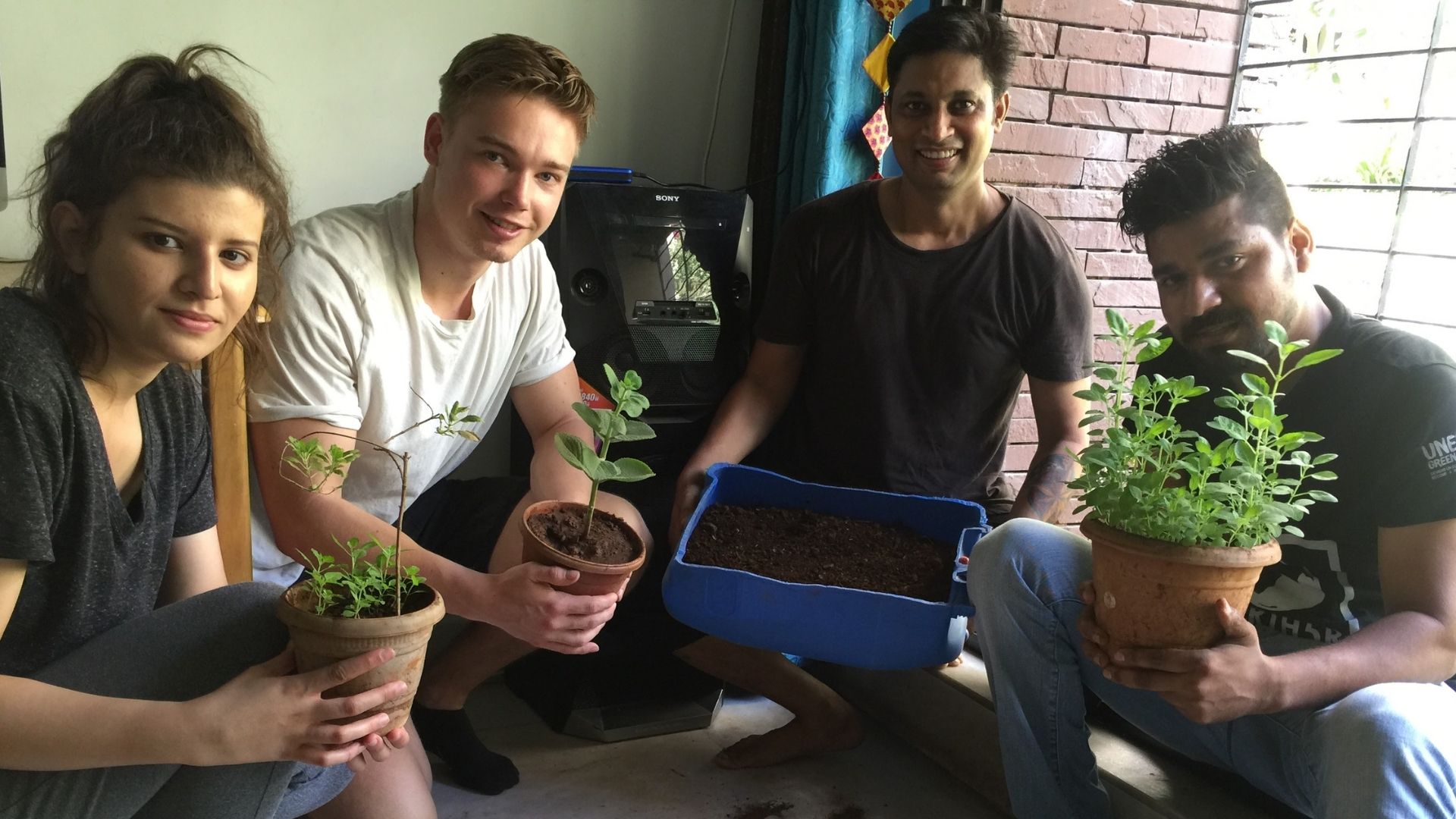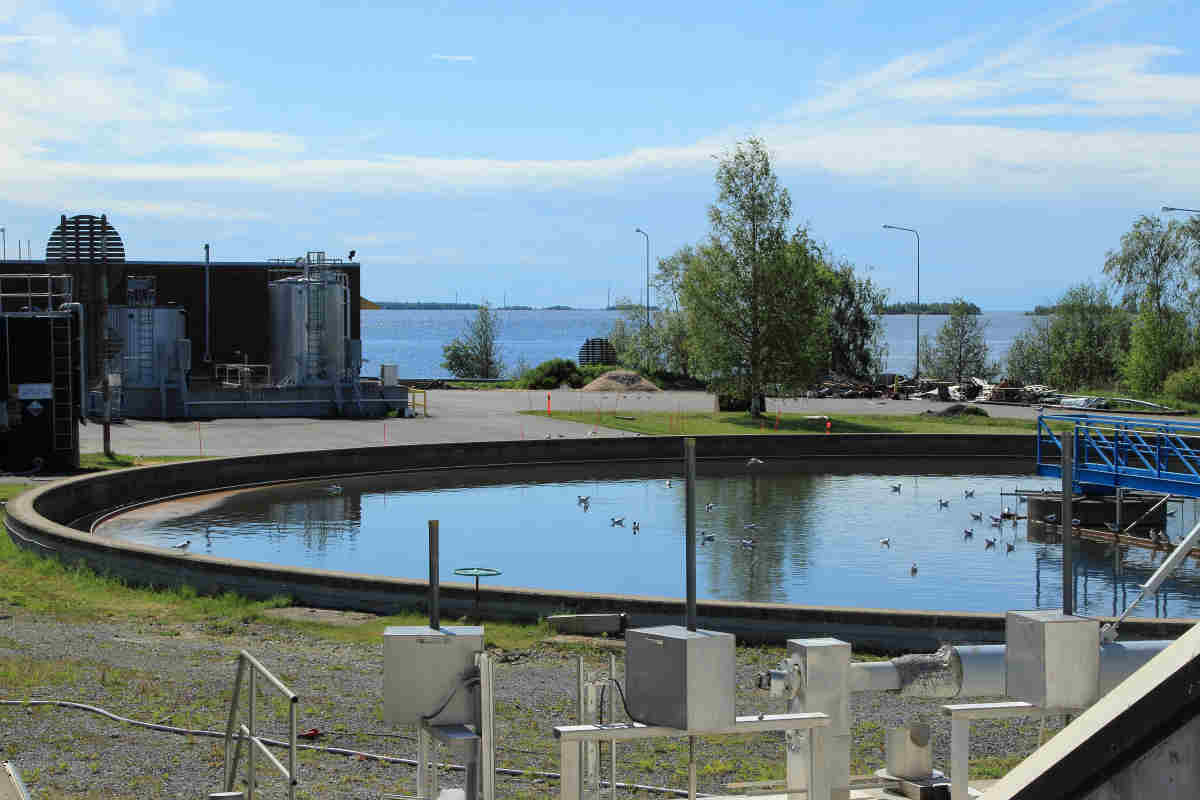Climate change disproportionately affects vulnerable communities, particularly those with limited access to resources, unstable incomes, and exposure to environmental hazards. Rising sea levels, unpredictable weather patterns, extreme heat, and natural disasters severely disrupt livelihoods, health, and food security.
These challenges are magnified in low-income urban and rural areas, where social and infrastructural support systems are often inadequate to withstand environmental shocks. In response to these challenges, the concept of climate-resilient communities has emerged—referring to groups that possess the adaptive capacity to anticipate, prepare for, respond to, and recover from climate-related disruptions.
Resilience is built not only through infrastructure but also through social cohesion, sustainable livelihoods, and proactive environmental stewardship. Earth5R, a global environmental organization, champions a community-first, sustainability-driven approach to climate action. Through its innovative livelihood model, Earth5R empowers marginalized populations by integrating sustainable economic opportunities with environmental restoration.
By turning waste into wealth, promoting green jobs, and enabling grassroots entrepreneurship, the organization helps communities reduce their ecological footprint while building long-term economic security. This article explores how Earth5R’s livelihood model fosters climate resilience by intertwining environmental sustainability with economic empowerment—providing a replicable blueprint for building adaptive, self-reliant communities in the face of climate change.
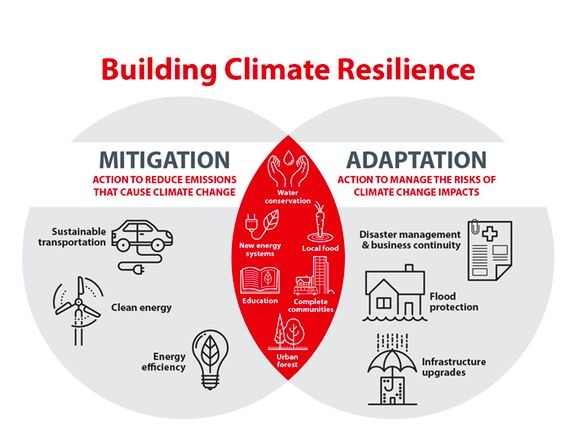
This image illustrates the dual strategies of climate resilience—mitigation and adaptation. While mitigation focuses on reducing emissions through clean energy and efficiency, adaptation emphasizes preparedness through infrastructure upgrades and disaster management.
Understanding Climate Vulnerability and Community Resilience
Climate vulnerability refers to the degree to which a system is susceptible to, and unable to cope with, adverse effects of climate change. According to the Intergovernmental Panel on Climate Change (IPCC), vulnerability is a function of three key factors: exposure (the extent of climate threats like floods or droughts), sensitivity (how severely a system will be affected), and adaptive capacity (its ability to respond and recover).
In simpler terms, the more exposed and sensitive a community is, and the less it can adapt, the more vulnerable it becomes. The Notre Dame Global Adaptation Initiative (ND-GAIN) Index further quantifies vulnerability by evaluating countries based on their exposure, sensitivity, and readiness to adapt to climate change. Many developing regions, including parts of South Asia and sub-Saharan Africa, score low on this index, indicating high vulnerability coupled with limited adaptive capacity.
Community resilience refers to the collective ability of a group of people to anticipate, prepare for, respond to, and recover from climate-related disruptions. It is shaped by several key indicators. Adaptive capacity involves the knowledge, resources, and systems that enable communities to respond effectively to climate stress.
Social capital plays a crucial role, encompassing community cohesion, trust, and the ability to mobilize collective action in times of crisis. Equally important are sustainable livelihoods, which provide stable, environmentally sound income sources and reduce dependence on fragile ecosystems, thereby enhancing the community’s long-term ability to withstand and adapt to environmental changes.
Poverty and marginalization are inextricably linked to low climate resilience. Communities with limited access to education, healthcare, finance, and infrastructure often live in high-risk areas—such as floodplains, coastal zones, or informal urban settlements. When disasters strike, they have fewer resources to cope, recover, or rebuild.
Moreover, systemic inequities prevent them from accessing climate information, participating in decision-making, or benefiting from mitigation policies. To effectively reduce climate vulnerability, solutions must be localized, inclusive, and livelihood-centric. Large-scale infrastructure projects alone cannot build resilience unless they are rooted in local contexts and community engagement.
Climate-resilient development must empower individuals with the skills, resources, and autonomy to adapt sustainably. Livelihood-focused models—such as those that upskill communities in green jobs, sustainable farming, or waste management—create a dual impact: environmental restoration and economic upliftment.
By focusing on people as agents of change rather than passive victims, such approaches not only enhance resilience but also promote environmental justice, equity, and long-term sustainability—principles central to Earth5R’s mission.

Earth5R’s Livelihood Model: Principles and Components
At the heart of Earth5R’s approach to climate action lies a transformative livelihood model grounded in the principles of sustainability, equity, and grassroots empowerment. This model is built on three foundational pillars: the circular economy, community education, and women-led action.
Together, these principles form a robust framework that enables vulnerable populations not only to adapt to climate change but also to actively participate in environmental restoration and economic development. The circular economy principle focuses on minimizing waste and maximizing resource efficiency by promoting reuse, recycling, and sustainable production.
Unlike linear economic systems, which rely on resource extraction and disposal, Earth5R’s model emphasizes converting waste into valuable resources—laying the foundation for both environmental protection and income generation. Complementing this is education, which empowers communities with the knowledge and skills needed to address local environmental challenges.
Earth5R places special emphasis on women-led action, recognizing that women—particularly in low-income communities—are both disproportionately affected by climate change and uniquely positioned to lead climate adaptation strategies through social cohesion and community leadership.
Skill Development and Green Upskilling
Earth5R trains community members in environmentally sustainable practices, such as composting, waste segregation, rainwater harvesting, and urban farming. These “green skills” enhance adaptive capacity while opening up new employment opportunities in emerging eco-sectors.
Waste-to-Wealth Programs
Local residents are trained to convert solid waste—especially plastic and organic waste—into useful products like eco-bricks, compost, and recycled goods. This not only reduces landfill pressure and environmental degradation but also provides a steady source of income for households that were previously economically marginalized.
Social Entrepreneurship Training
Earth5R fosters a culture of innovation by equipping individuals—especially women and youth—with the tools to launch micro-enterprises rooted in sustainability. Participants receive guidance on product development, financial planning, market access, and scaling strategies, creating a pipeline of eco-conscious entrepreneurs.
Community Engagement and Participatory Governance
The model thrives on collaboration. Earth5R facilitates workshops, clean-up drives, and planning sessions where local residents co-design solutions, monitor outcomes, and participate in governance. This strengthens social capital and ensures that interventions are rooted in local context and ownership.
These components intersect powerfully with climate resilience goals. By creating stable, low-carbon livelihoods, Earth5R helps reduce community dependence on climate-sensitive sectors like traditional agriculture or informal labor. At the same time, environmental degradation is actively reversed through citizen-led restoration projects. Importantly, the model builds adaptive capacity by enhancing skills, boosting income, and fostering social networks—three essential ingredients of community resilience as identified by global climate frameworks.
In essence, Earth5R’s livelihood model offers a scalable, replicable strategy that not only mitigates the environmental drivers of vulnerability but also empowers communities to become resilient stewards of their own sustainable futures.
Case Studies and Impact Analysis
Earth5R’s livelihood model is a multi-dimensional approach to climate resilience, combining sustainable economic opportunities with environmental restoration. Its effectiveness is best demonstrated through real-world case studies. Below are two cases from Mumbai where Earth5R’s interventions led to measurable improvements in income, environmental health, and disaster preparedness. These stories offer insight into how localized, community-first solutions can scale resilience in vulnerable settings.
Case Study 1: Waste Segregation and Circular Economy in a Mumbai Slum (Govandi)
Govandi, one of Mumbai’s most marginalized slum areas, has long struggled with unmanaged waste, poor sanitation, and recurring health crises. In 2021, Earth5R launched a community-driven waste management initiative focused on waste segregation at source, composting, and waste-to-wealth activities.
The program began with awareness campaigns and hands-on workshops aimed at educating residents—particularly women—on how to separate organic and non-organic waste and use discarded materials to generate income. Earth5R facilitated training in compost production, plastic repurposing, and eco-brick manufacturing.
The organic compost was used in local micro-gardens and sold to nearby farms, while upcycled products were marketed through Earth5R’s eco-network platform. Within the first year of implementation, the waste segregation and circular economy initiative in Govandi yielded substantial quantitative outcomes. Over 28 tonnes of waste were successfully diverted from landfills, significantly reducing environmental burden.
Simultaneously, 120 participating households experienced an average income increase of 22%, generated primarily through the sale of compost and handmade recycled products. Additionally, the community saw a 35% reduction in incidents of waterlogging and drain blockages, leading to notable improvements in public health and mobility, particularly during the challenging monsoon season.
Qualitative Impact
Residents reported improved community hygiene, fewer vector-borne diseases, and a growing sense of pride and environmental ownership. A 2022 Earth5R report showed increased community engagement in civic planning and a 40% rise in participation in local clean-up drives. Women in particular expressed a renewed sense of agency, as they became both income earners and environmental stewards.
Case Study 2: Tree Plantation for Climate Resilience in Suburban Mumbai (Mulund)
In Mulund, a flood-prone suburban locality, Earth5R led a large-scale tree plantation drive in 2022 to tackle urban heat, reduce runoff, and build ecological resilience. The initiative involved local schoolchildren, resident welfare associations, and volunteers who planted over 6,000 native tree species across degraded plots and along flood-prone pathways.
Earth5R also implemented bio-swales and green buffer zones, using compost generated from nearby waste management programs to enrich the soil and reduce erosion. The tree plantation initiative in Mulund resulted in impressive quantitative outcomes. During the subsequent monsoon, the area saw a 25–30% reduction in floodwater accumulation, as measured by local municipal drainage reports.
Besides, the project improved soil absorption capacity, and ambient temperatures in densely built-up areas dropped by 1.5–2°C during peak summer months, helping to mitigate the urban heat island effect. Community members involved in managing the green zones also experienced an 8–10% increase in household income, generated from the sale of compost, nursery saplings, and eco-walks organized through Earth5R’s outreach programs.
Qualitative Impact
The project strengthened environmental awareness, especially among youth, and led to the formation of “green committees” tasked with maintaining the saplings. A sense of collective ownership emerged, transforming the community from passive recipients of aid to proactive environmental stakeholders. Residents also reported improved mental well-being and community bonding through the greening activities.
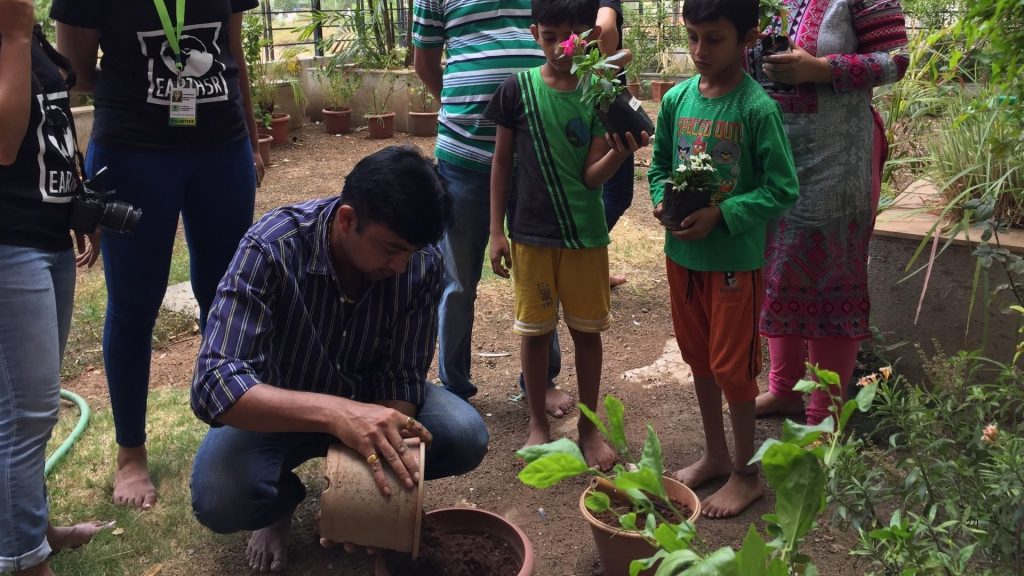
Scientific Validation and Metrics
A 2023 study conducted jointly by Earth5R and the Tata Institute of Social Sciences (TISS) assessed the impact of the organization’s programs on community resilience. The study, which used metrics such as income diversification, reduction in climate vulnerability, and environmental literacy, found a 30–40% increase in adaptive capacity scores in communities engaged with Earth5R.
Moreover, there was a significant reduction in waste-related illness cases in areas where waste management initiatives were implemented. The study also highlighted the enhanced ecosystem services in neighborhoods with sustained green cover expansion, such as improved water retention and air quality, further contributing to the communities’ climate resilience.
The case studies also align with findings from a 2021 paper in Environmental Research Letters, which confirms that tree cover and decentralized waste management significantly enhance urban resilience by reducing the impacts of flooding and heat stress, while also creating livelihood opportunities.
Together, these examples demonstrate that Earth5R’s model does more than address symptoms of climate change—it builds the foundational systems for long-term resilience. By empowering communities to restore their environments and generate sustainable income, Earth5R creates pathways toward inclusive, climate-resilient futures.
Integration with Global Frameworks and SDGs
Earth5R’s livelihood model is deeply aligned with global frameworks for sustainable development and climate resilience, demonstrating how grassroots initiatives can contribute meaningfully to large-scale global objectives. By focusing on community-led environmental action, income generation, and climate adaptation, Earth5R’s model not only addresses immediate local needs but also advances progress toward the United Nations Sustainable Development Goals (SDGs), the Sendai Framework for Disaster Risk Reduction, and the Paris Agreement.
Alignment with UN SDGs
Earth5R’s approach significantly supports key UN SDGs, particularly SDG 1 (No Poverty), SDG 11 (Sustainable Cities and Communities), and SDG 13 (Climate Action). Through programs like waste-to-wealth and green entrepreneurship, Earth5R fosters sustainable livelihoods that create income-generating opportunities for vulnerable communities, lifting them out of poverty and reducing reliance on fragile sectors.
The organization promotes climate-resilient urban communities by focusing on sustainable waste management, green infrastructure, and eco-friendly business models. This approach aligns with SDG 11’s goal of making cities safe, inclusive, and sustainable.
Furthermore, Earth5R emphasizes climate adaptation through initiatives like green cover expansion and flood mitigation, helping communities mitigate the impacts of climate change. The organization also contributes to reducing carbon footprints through sustainable practices and circular economy initiatives, supporting SDG 13’s climate action goals.
Sendai Framework for Disaster Risk Reduction
The Sendai Framework emphasizes the importance of building resilient communities, reducing disaster risks, and strengthening disaster preparedness, particularly in vulnerable regions. Earth5R’s livelihood model contributes significantly to this by enhancing community resilience.
Through risk reduction programs such as tree plantation, waste management, and flood mitigation, Earth5R helps reduce the risk of natural disasters, particularly floods and heatwaves. The planting of native trees and the creation of green zones protect against soil erosion and improve water retention, thus mitigating flood impacts.
Likewise, Earth5R’s disaster preparedness efforts include skill development programs that equip communities to anticipate, respond to, and recover from climate-related disruptions. These initiatives involve creating disaster response teams, establishing early warning systems, and engaging communities in awareness-building activities on climate risks and preparedness strategies.
Synergy with the Paris Agreement Goals
The Paris Agreement aims to limit global warming to well below 2°C above pre-industrial levels, focusing on reducing greenhouse gas emissions and enhancing adaptive capacities to climate change. Earth5R’s model aligns with these goals by supporting both climate adaptation and mitigation efforts.
Through programs like flood mitigation, water conservation, and urban farming, Earth5R helps vulnerable communities adjust to climate impacts, reducing their vulnerability to hazards while enhancing their adaptive capacity. In terms of mitigation, Earth5R promotes waste-to-wealth initiatives and sustainable practices that reduce landfill waste and cut methane emissions.
In addition, the restoration of green spaces enhances carbon sequestration, contributing to global efforts to mitigate climate change. By aligning with the Paris Agreement’s climate adaptation goals and focusing on both mitigation and adaptation strategies at the local level, Earth5R’s model serves as a grassroots approach that supports the broader, global climate action agenda.
In conclusion, Earth5R’s model exemplifies how localized, community-driven efforts can align with and contribute to the achievement of global sustainability and climate goals. Through its integration with the UN SDGs, the Sendai Framework, and the Paris Agreement, Earth5R is demonstrating that resilient, sustainable communities are essential for tackling the challenges of climate change.
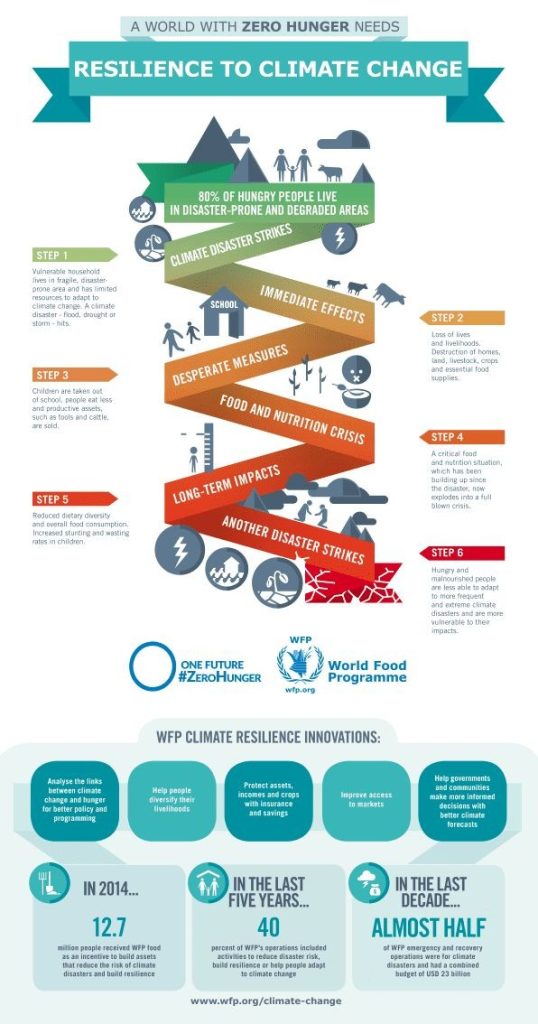
This infographic highlights how climate disasters intensify hunger and poverty, especially in vulnerable regions where 80% of hungry people live. It emphasizes the need for climate resilience innovations—like livelihood support and insurance—to break the cycle of crisis and build long-term food security.
Challenges, Gaps, and Scalability
While Earth5R’s livelihood model has shown success in building climate-resilient communities, several challenges must be overcome to ensure its broader implementation and scalability.
Policy and Regulatory Challenges
In many regions, outdated or inadequate policies around waste management, urban planning, and environmental restoration hinder the adoption of sustainable practices. Bureaucratic delays and lack of government incentives for green entrepreneurship often slow down the implementation of climate adaptation programs.
Funding and Resources
Securing consistent funding for community-driven initiatives is a significant barrier. Many vulnerable communities lack the financial capital to invest in long-term sustainability projects, and donors or investors may be hesitant to commit to projects with uncertain returns, particularly in underdeveloped areas.
Community Resistance
In some cases, communities may resist change due to cultural factors or lack of awareness about climate change and environmental sustainability. Overcoming skepticism and building trust is crucial for the success of programs, particularly when introducing new livelihood models such as waste-to-wealth initiatives.
Infrastructure Limitations
In many vulnerable regions, there is a lack of basic infrastructure to support sustainable practices, such as waste management systems, water conservation structures, or green spaces. Without these foundational systems in place, it can be difficult to implement and sustain Earth5R’s programs.

Earth5R’s Approach to Addressing Gaps
Earth5R actively addresses these barriers by engaging local stakeholders, including government bodies, NGOs, and community leaders. This collaboration helps advocate for policy reforms and create a supportive ecosystem for green initiatives. Additionally, Earth5R works to secure funding through strategic partnerships with social impact investors and grant organizations.
The organization also focuses on education and capacity building to ensure community buy-in. By fostering awareness, Earth5R creates strong local leadership that drives the initiatives. This approach helps overcome resistance and ensures the sustainability of programs in the long term.
Potential for Scalability
Earth5R’s model has significant scalability potential. It is adaptable to different geographies and demographics, with the core principles of sustainability, community involvement, and climate adaptation being universally applicable.
By leveraging technology and establishing local partnerships, Earth5R can expand its impact to urban and rural areas alike, tailoring programs to fit the unique needs of diverse populations while maintaining the central goal of enhancing climate resilience. The model’s emphasis on replicable processes—such as waste management and green entrepreneurship—offers a flexible framework that can be scaled globally.
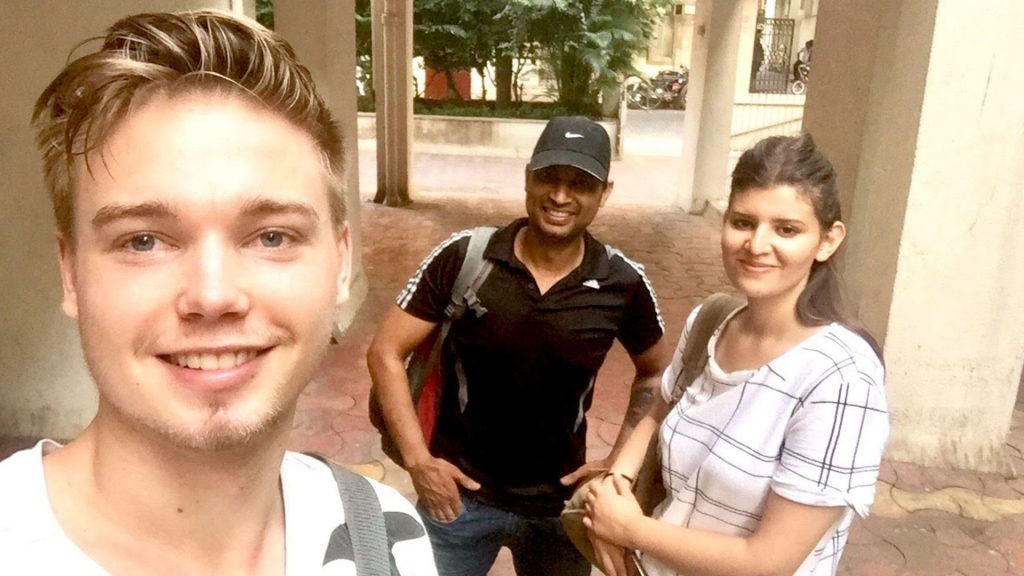
Empowering Communities for Climate Resilience: The Path Forward Through Livelihood-Centric Action
In conclusion, Earth5R’s livelihood model has demonstrated a powerful and effective approach to building climate-resilient communities by integrating environmental restoration with economic empowerment. Through programs like waste-to-wealth, green entrepreneurship, and community-led disaster preparedness, Earth5R has shown that sustainable livelihoods are central to addressing the challenges posed by climate change.
These initiatives not only reduce environmental degradation but also equip vulnerable communities with the skills, resources, and income-generating opportunities needed to thrive in an increasingly unstable climate. The findings from various case studies and the impact analysis highlight the critical role of community-driven solutions in fostering resilience.
Earth5R’s approach aligns with global climate frameworks such as the UN SDGs, the Sendai Framework, and the Paris Agreement, demonstrating how localized efforts can contribute meaningfully to broader climate goals. The quantitative and qualitative results from Earth5R’s programs—such as reduced waste, increased income, and enhanced adaptive capacity—underscore the tangible benefits of incorporating livelihood-centric strategies into climate action.
Looking forward, there is an urgent need to scale such grassroots innovations. The climate resilience narrative cannot solely rely on top-down interventions but must also harness the power of local communities to design and implement solutions that are context-specific and sustainable.
Grassroots innovation offers not only a pathway to local empowerment but also creates the potential for replication and scalability across diverse geographies and demographics. As the global climate crisis intensifies, prioritizing community-led, livelihood-focused interventions will be essential in creating resilient, adaptive societies capable of mitigating and adapting to climate impacts.
By continuing to foster such innovations, Earth5R and similar organizations can catalyze transformative change that reaches beyond individual communities, contributing to a more sustainable and resilient world.
(FAQs) on Building Climate-Resilient Communities with Earth5R’s Livelihood Model
What is Earth5R’s livelihood model?
Earth5R’s livelihood model integrates environmental restoration with economic resilience, focusing on sustainable livelihoods, waste management, and community-led climate adaptation initiatives.
How does Earth5R promote climate resilience in communities?
Earth5R promotes climate resilience by engaging communities in sustainable practices like waste-to-wealth, tree plantation, urban farming, and flood mitigation, which enhance adaptive capacities and reduce vulnerability to climate change.
What are the key components of Earth5R’s livelihood model?
Key components include skill development, waste-to-wealth programs, social entrepreneurship training, community engagement, and participatory governance.
How does Earth5R’s model contribute to poverty reduction?
By providing communities with new income-generating opportunities, such as compost sales, recycled product manufacturing, and eco-tourism, Earth5R helps reduce poverty and improve economic stability.
Which UN Sustainable Development Goals (SDGs) does Earth5R’s model align with?
Earth5R aligns with several SDGs, particularly SDG 1 (No Poverty), SDG 11 (Sustainable Cities and Communities), and SDG 13 (Climate Action).
What is the importance of circular economy in Earth5R’s approach?
Circular economy principles in Earth5R’s model, such as waste-to-wealth and sustainable resource use, reduce waste, promote recycling, and lower carbon emissions, contributing to both economic and environmental resilience.
How does Earth5R’s model support disaster risk reduction?
Earth5R supports disaster risk reduction through programs that mitigate flood risks, enhance green infrastructure, and improve community preparedness for climate-related disruptions.
What role does education play in Earth5R’s model?
Education and capacity building are key in Earth5R’s model, ensuring communities understand climate risks, adapt to environmental changes, and actively participate in sustainable practices.
How can Earth5R’s model be scaled globally?
By adapting the model to various geographic and demographic contexts, Earth5R’s approach can be scaled globally through local partnerships, technology, and capacity-building programs.
What are some examples of successful case studies from Earth5R?
Case studies include a slum community in Mumbai adopting waste segregation and a women-led sustainable entrepreneurship initiative in flood-prone areas, both showing significant social and environmental impacts.
How does Earth5R address barriers like policy and funding?
Earth5R works with local governments, NGOs, and social investors to advocate for policy reforms, secure funding, and create a supportive ecosystem for sustainable practices.
Why is community engagement important in Earth5R’s model?
Community engagement ensures that local needs, knowledge, and capabilities are integrated into the design and implementation of climate resilience programs, fostering ownership and long-term sustainability.
How does Earth5R measure the impact of its programs?
Earth5R measures impact through quantitative and qualitative metrics such as increased household income, waste diverted from landfills, reduced disaster vulnerability, and improved environmental health indicators.
What is the relationship between climate change and urban resilience?
Climate change exacerbates challenges in urban areas, such as heatwaves and floods. Earth5R’s model helps cities become more resilient by integrating green infrastructure and sustainable waste management practices.
How does Earth5R’s model help reduce waste and promote sustainability?
By focusing on waste-to-wealth initiatives, Earth5R helps divert waste from landfills, reduce methane emissions, and promote recycling, thereby contributing to a circular economy.
What challenges does Earth5R face in implementing its model?
Challenges include policy barriers, securing funding, overcoming community resistance, and addressing infrastructure limitations, particularly in vulnerable regions.
What are the long-term benefits of Earth5R’s climate resilience programs?
Long-term benefits include improved community health, increased income stability, reduced disaster risk, enhanced local ecosystems, and greater social cohesion.
How does Earth5R’s model align with the Sendai Framework for Disaster Risk Reduction?
Earth5R’s focus on reducing risks through environmental restoration and improving community preparedness aligns with the Sendai Framework’s emphasis on disaster risk reduction and resilience building.
What are the primary indicators of community resilience in Earth5R’s model?
Key indicators include adaptive capacity, social capital, sustainable livelihoods, and reduced vulnerability to climate-related disasters.
How does Earth5R’s model contribute to the global climate action agenda?
Earth5R contributes by integrating local actions with global frameworks like the Paris Agreement, focusing on climate adaptation, mitigation through circular economy practices, and building resilient communities.
Act Local, Impact Global: Join the Movement for Climate-Resilient Communities
The challenges posed by climate change are growing, and vulnerable communities are at the forefront of this global crisis. However, as we’ve seen through Earth5R’s groundbreaking livelihood model, there is a path forward—one that empowers communities to become climate-resilient through sustainable practices, education, and local innovation. But to scale these efforts and ensure broader impact, we need your support.
Join us in championing the integration of environmental restoration with economic resilience. Advocate for policies that promote sustainable livelihoods and climate adaptation at the grassroots level. Support community-led initiatives by investing in sustainable businesses, green entrepreneurship, and waste-to-wealth programs. Whether you’re an individual, business, or policymaker, you can play a crucial role in creating a more climate-resilient world.
Take action today—volunteer with local climate resilience projects, donate to organizations like Earth5R, or even launch your own sustainability initiative in your community. Every step counts, and together, we can scale these models to reach more people, reduce climate vulnerability, and build a future where no one is left behind. Let’s move forward with purpose, innovation, and commitment to fostering a more sustainable, resilient world for all.
~Authored by Ameya Satam

